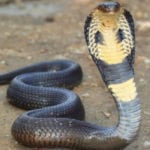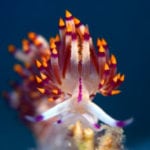 Technology
Technology  Technology
Technology  Humans
Humans 10 Everyday Human Behaviors That Are Actually Survival Instincts
 Animals
Animals 10 Animals That Humiliated and Harmed Historical Leaders
 History
History 10 Most Influential Protests in Modern History
 Creepy
Creepy 10 More Representations of Death from Myth, Legend, and Folktale
 Technology
Technology 10 Scientific Breakthroughs of 2025 That’ll Change Everything
 Our World
Our World 10 Ways Icelandic Culture Makes Other Countries Look Boring
 Misconceptions
Misconceptions 10 Common Misconceptions About the Victorian Era
 Mysteries
Mysteries 10 Strange Unexplained Mysteries of 2025
 Miscellaneous
Miscellaneous 10 of History’s Most Bell-Ringing Finishing Moves
 Technology
Technology Top 10 Everyday Tech Buzzwords That Hide a Darker Past
 Humans
Humans 10 Everyday Human Behaviors That Are Actually Survival Instincts
 Animals
Animals 10 Animals That Humiliated and Harmed Historical Leaders
Who's Behind Listverse?

Jamie Frater
Head Editor
Jamie founded Listverse due to an insatiable desire to share fascinating, obscure, and bizarre facts. He has been a guest speaker on numerous national radio and television stations and is a five time published author.
More About Us History
History 10 Most Influential Protests in Modern History
 Creepy
Creepy 10 More Representations of Death from Myth, Legend, and Folktale
 Technology
Technology 10 Scientific Breakthroughs of 2025 That’ll Change Everything
 Our World
Our World 10 Ways Icelandic Culture Makes Other Countries Look Boring
 Misconceptions
Misconceptions 10 Common Misconceptions About the Victorian Era
 Mysteries
Mysteries 10 Strange Unexplained Mysteries of 2025
 Miscellaneous
Miscellaneous 10 of History’s Most Bell-Ringing Finishing Moves
Top 10 Tiny Creatures Capable Of Killing You
While the smallest organisms capable of killing a human fall on the bacteria and virus branches of the tree of life, they aren’t what many would call a “creature.” There are plenty of proper animals that have been killing folks for hundreds of thousands of years.
Granted, most of the deadliest animals in the world are relatively large. While they are certainly interesting, the smallest killer critters can be far more fascinating. These ten animals are two fundamental things: they’re small and horrifically deadly.
Since they could all kill a person, they are arranged from the largest to the smallest deadly critter. Also, no vectors here, so don’t expect to see mosquitoes or fleas — only animals that can kill a person through direct contact.
10 Australian Animals That Aren’t As Deadly As You Think
10 Australian Box Jellyfish
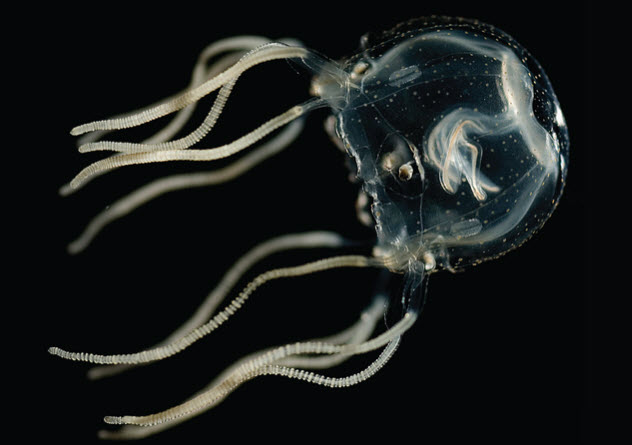
Most jellyfish are more of an annoying nuisance than anything else. They tend to swarm and get in the way when you’re diving, and outside the occasional painful sting, they aren’t much of a bother.
Some jellyfish stings are excruciating, but they don’t result in death. That’s not true of the Australian Box Jellyfish (Chironex fleckeri), which is often cited as the most venomous marine animal.
C. fleckeri is the largest of the 51 known species of box jellyfish. In terms of size, they average around 12 inches (30 cm) in diameter. Its tentacles can extend for 10 feet (3 meters), so it’s not the smallest thing in the ocean.
Regardless, it’s something that should be avoided at all costs, which can be difficult. They don’t float about with the current and can swim up to 20 ft/second (6 m/sec.) or four knots. Their tentacles can deliver microscopic darts carrying intensely painful venom.
If stung and left untreated, death can come within two to five minutes. A single C. fleckeri has enough venom to kill around 60 adult humans. Nearly 80 fatalities have been recorded in Australia since the 19th century.
9 Amazonian Giant Centipede
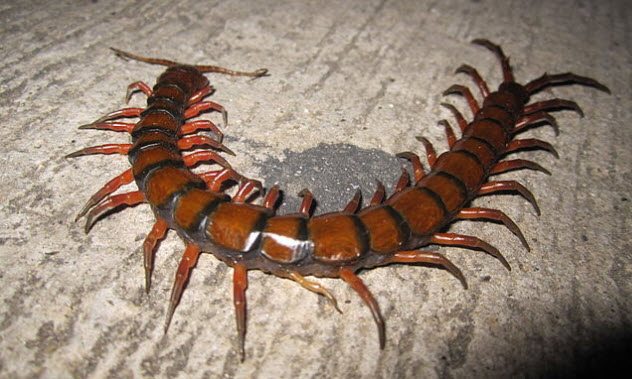
The Amazonian Giant Centipede (Scolopendra gigantea) is one of the largest centipedes on the planet, reaching 12 inches (30 cm) in length. They can be found throughout South America and the Caribbean, where it enjoys eating other large arthropods, amphibians, reptiles, birds, and small mammals.
These centipedes are true carnivores. It has no problem overpowering other relatively large insects, spiders, scorpions, lizards, frogs, bats, mice, and birds. While they may look interesting, they should never be handled. They possess a particularly nasty venom they don’t mind sharing with the world.
The venom of S. gigantea contains a potent neurotoxin, making it possible for them to take down animals significantly larger than themselves. The venom targets the cardiovascular, respiratory, muscular, and nervous systems, incapacitating their victims.
Envenomation in humans is incredibly painful and can cause severe issues if not treated. There is only one documented case of death from a bite. In 2014, a four-year-old child in Venezuela found one in an open soda can. The subsequent bite resulted in the child’s death despite a great deal of effort medical professionals made trying to save his life.
8 Geography Cone
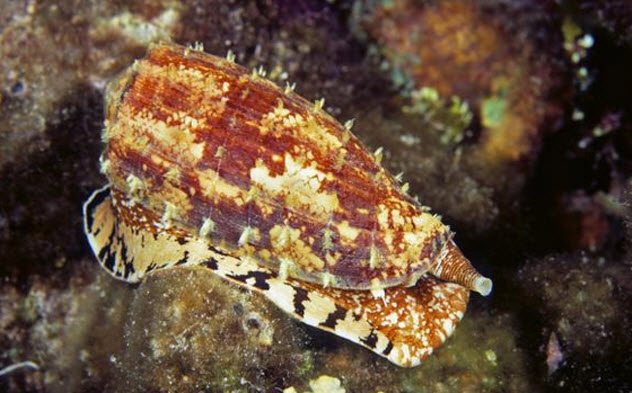
Cone snails are common worldwide, and because of their brightly colored shells, they are highly prized by shell collectors. It’s always best to collect the shells long after the snail has died because many of the 600+ species are extremely venomous.
The most dangerous of them all is the Geography Cone (Conus geographus), found in the coral reefs of the tropical Indo-Pacific. Despite being a small snail that grows to between 4 and 6 inches (10—15 cm), C. geographus actively hunts fish. It does this by firing off a harpoon-like tooth that delivers a powerful venom.
These little guys’ venom packs a wallop, and there is no antivenom to treat people once they are hit with it. The only thing medical professionals can do is try to keep a person alive long enough for the toxins to wear off.
If an adult is struck with the venom of the Geography cone, they will die within one to five hours without medical treatment. They are often called “cigarette snails” due to an old bit of gallows humor. It’s said that after a sting, a person has enough time to smoke a single cigarette before they die.
7 Deathstalker Scorpion
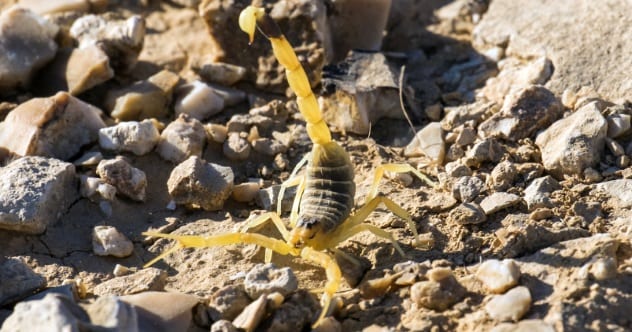
Scorpions are always somewhat dangerous to humans, as their sting tends to come with a lot of pain. Still, they aren’t ordinarily deadly, but that’s not to say there aren’t a few capable of killing a person. The deadliest known is the Deathstalker scorpion (Leiurus quinquestriatus), which measures around 3 to 4 inches (80 to 110 mm).
They are found throughout North Africa and the Middle East, where they are well known for the danger they present. Their venom is a nasty mix of neurotoxins that carry a low lethal dose. It includes chlorotoxin, charybdotoxin, scyllatoxin, and three types of agitoxins, all of which block specific channels of the nervous system.
While the envenomation of an adult doesn’t typically result in death, the young, infirmed, and elderly are all at risk. Most stings result in anaphylaxis, which can be followed by pancreatitis. An antivenom exists, but it is often needed in large doses to counter the deathstalker’s venom’s effects.
When death does occur, it’s most often the result of respiratory failure. Interestingly, while their venom can be fatal, it contains components that may help treat brain tumors and diabetes.
6 Blue-Ringed Octopus
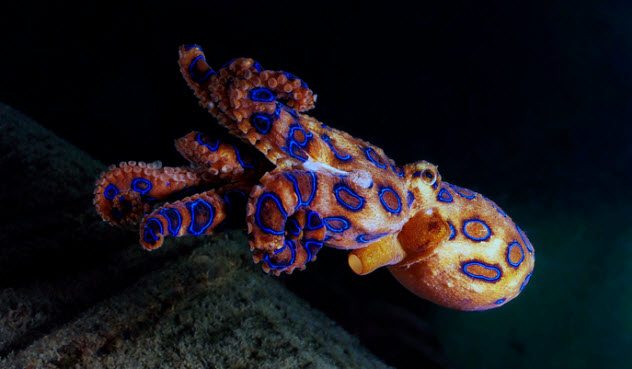
Most people don’t think of an octopus as a venomous creature since the main focus is usually on its eight legs. There are several venomous octopi, and the deadliest is, by far, the Blue-ringed octopus. There are four species, and every one of them can be deadly to humans.
Blue-ringed octopi are small compared to other species, as most measure between 2.5 and 4 inches (6 to 10 cm). They get their name thanks to the brilliant blue rings found all over their bodies, and they can be found in tide pools and coral reefs in the Pacific and Indian Oceans.
A Blue-ringed octopus is typically docile around humans, which can be a problem. This leads unsuspecting people to pick them up to admire their unique coloration, but this is a mistake. The little octopi are some of the world’s most venomous marine animals, and their venom is no joke.
They carry a powerful neurotoxin tetrodotoxin. A single octopus has enough to kill 25 adult humans in a matter of minutes. Their bite is often painless because of their small size, so most people who are bitten only realize it when they stop breathing and become paralyzed.
5 Golden Poison Dart Frog
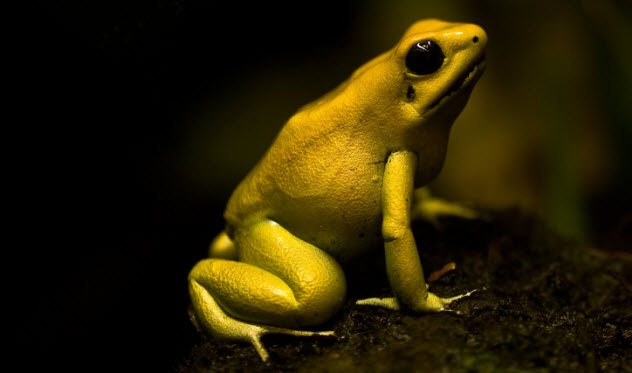
The Golden Poison Dart frog (Phyllobates terribilis) is the most poisonous animal in the world. The key word here is “poisonous,” as it has no venom of its own. Still, a single frog has enough poison secreted from its skin to kill 22,000 mice. Their name is derived from the Choco Emberá, who used the frogs to poison their darts used for hunting.
These tiny frogs grow to a maximum of 2 inches (55 mm), making them particularly small. They are prized for their coloration, which is arguably quite beautiful. Still, handling one is a terrible idea should you find them in their native habitat of Colombia’s Pacific coast forests.
Their skin is densely coated in an alkaloid toxin, which causes a victim’s nerves to stop transmitting impulses. This leads to heart failure, and a single frog contains enough toxins to kill between 10 to 20 people.
Fortunately, lethal poisoning is rare, but it can happen. If the frogs are removed from their native habitat, they stop producing toxins, rendering them harmless. Their toxin builds from their consumption of ants that result in the buildup of batrachotoxins, so without the ants, they become innocuous.
4 Giant Silkworm Moth Caterpillar
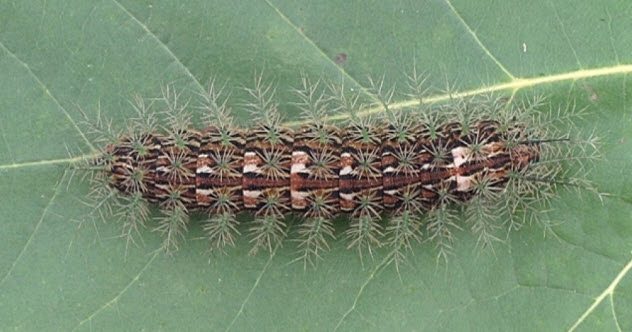
The Giant Silkworm Moth Caterpillar (Lonomia obliqua) is a saturniid moth species found in South America. They are relatively small, measuring only about 2 inches (5.5 cm) long. According to the Guinness World Records, they make up for their size by being the most venomous caterpillar in the world.
Most people don’t see caterpillars as a threat, but if you should ever find yourself standing on a path with one of these, don’t go anywhere near it! They have a toxic venom capable of causing disseminated intravascular coagulation and consumptive coagulopathy. That’s a fancy way of saying it causes your blood to clot throughout your body.
When that happens, hemorrhagic syndrome and death aren’t far behind. These little guys don’t bite their victims to inject venom. Instead, their hollow bristles, which are found all over its body, contain and inject the venom into the poor fool who touches them.
Their spines may look like hairs, but they can easily penetrate the skin to deliver their venom. Fatalities are common with these caterpillars, but death isn’t certain. It can take several painful and miserable days to kick in, so immediate medical treatment is required.
3 Sydney Funnel-Web Spider
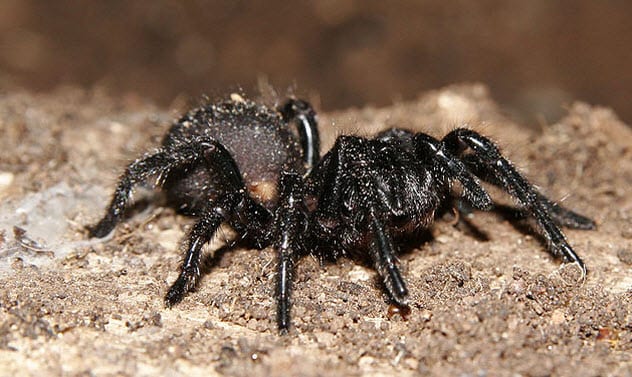
Several species of spiders are capable of killing folks, which is one reason arachnophobia is so prevalent. Still, the vast majority could only hurt a fly — after all, a spider’s venom is wasted on a human since we aren’t their usual prey.
Still, some spiders can kill, and the Sydney Funnel-Web Spider is one of the deadliest. They can only be found within a 63 mile (100 km) radius of Sydney, Australia, and they are the “most venomous” spiders in the world, regarding their toxicity to humans.
They aren’t the largest spiders in the world, with most examples’ body length ranging from 0.4 to 2 inches (1 to 5 cm). They have large, nasty-looking fangs, which they use to inject their entire venom reserve into their victims.
The venom contains a compound called atracotoxin, which inhibits the nervous system in primates. This can lead to death in as little as 15 minutes if untreated with antivenom. A full envenomated bite can kill an adult human, but they are more dangerous to the young and elderly.
2 Blue Sea Dragon
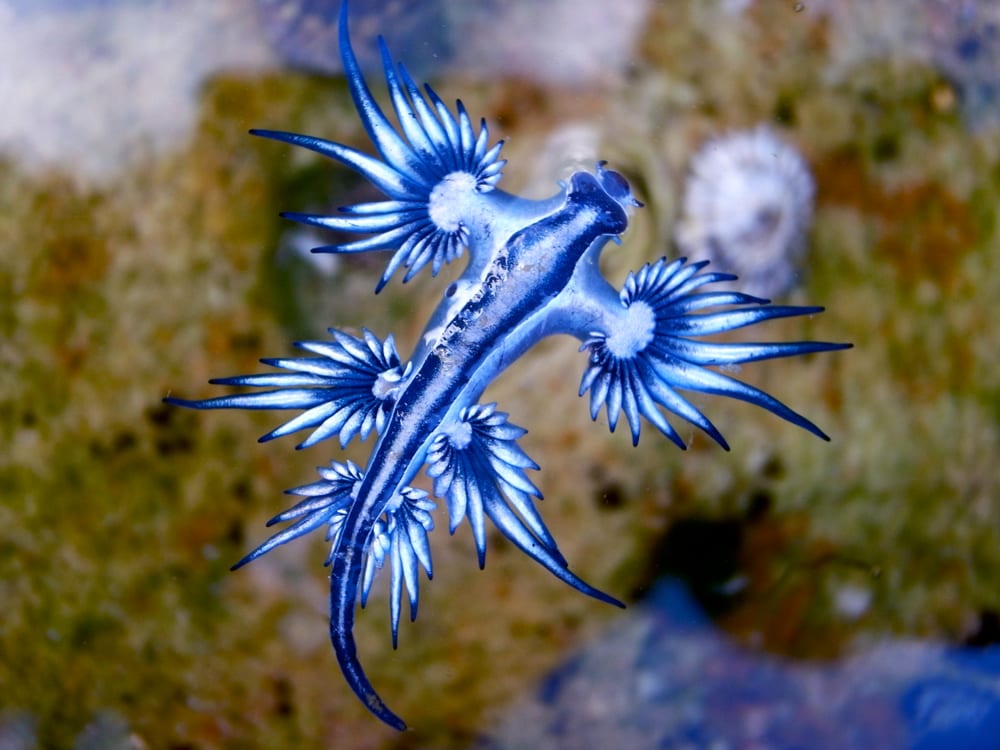
Blue Sea Dragons (Glaucus atlanticus) are a species of sea slug known for their beautiful and unique shape, which resembles a dragon. They measure only about 1.2 inches (3 cm) and can be found throughout the world’s oceans, but if you ever see one, avoid it at all costs!
These critters may be beautiful to look at, but they are incredibly dangerous and more than willing to sting someone who picks them up. Their diet consists of other venomous animals, specifically the parts of animals that contain venom. One of their favorite meals is the nematocysts from the Portuguese man o’ war.
When an animal eats nothing but venom, they tend to incorporate what they eat into their own nasty sting. When they do sting someone, it can be excruciating. It will cause all kinds of problems, including pain, vomiting, and acute allergic contact dermatitis.
Typically, handling one of these animals won’t kill a person. That said, there is a risk of a severe allergic reaction, resulting in death if left untreated. It’s always best to operate under a ‘look but don’t touch’ policy where the Blue Sea Dragon is concerned.
1 Common Kingslayer
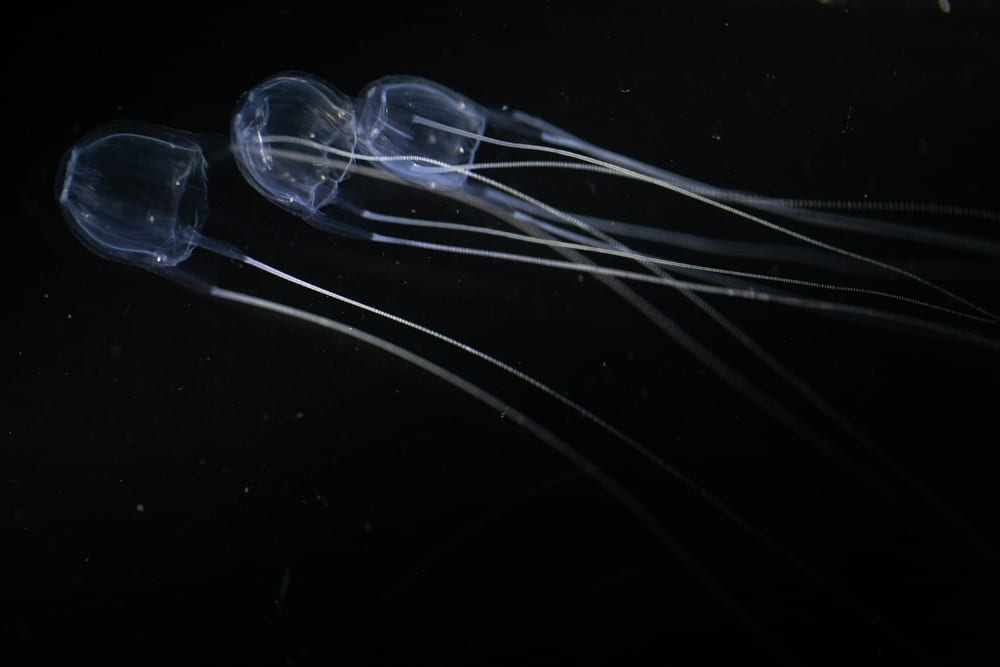
The Common Kingslayer (Malo Kingi) is a species of Irukandji jellyfish that is minuscule compared to larger animals such as the Australian Box Jellyfish. M. Kingi measures a comparatively tiny 1 inch (3 cm) and is entirely transparent, making them difficult to spot.
They make up for their small size by carrying a particularly nasty venom, which can lead to Irukandji syndrome. If afflicted with the syndrome, most adults can expect to experience severe pain, rapid blood pressure, and vomiting. While death is rare, it can occur.
The name “Common Kingslayer” was given to the jellyfish following Robert King’s death, an American tourist who died after being stung. King is the only person who is known to have been killed by their sting, but he’s not the only person who’s been hit by them.
Stings are relatively common due to the difficulty swimmers have in seeing and avoiding them. It’s believed that their venom becomes more potent as they mature. Since King’s death in 2002, more attention has been given to M. Kingi, which was first described only five years following King’s death.







